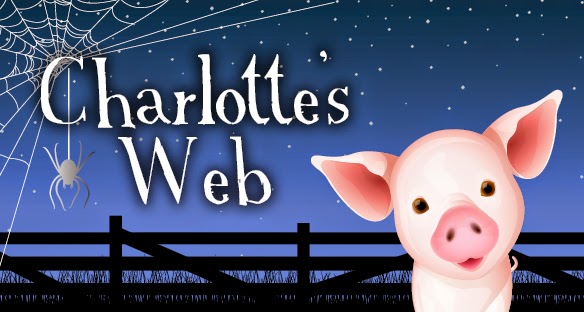In His Own Words: Playwright Matthew Lopez on The Whipping Man’s Inspiration
 |
| Matthew Lopez |
"In researching the end of the war, and the very eventful month of April 1865, I came across a reference to the fact that Passover began that year on April 10, the day immediately following Lee’s surrender at Appomattox. This means that as Jews across the nation were celebrating this sacred ritual commemorating their ancestors’ freedom from bondage in Egypt, a new kind of exodus was occurring all around them. The parallels were irresistible.
"The Whipping Man began in my mind with the image of an old man performing a Seder. Recently freed from a lifetime of slavery, he speaks the words of the Haggadah with a newfound understanding of their meaning. The words are hopeful, a promise of justice to come. Something ancient and distant suddenly becomes immediate. The past and the present intermingle as he becomes a part of a history that began thousands of years before his birth and that arrives finally at the moment he takes his first psychological and emotional step towards emancipation. The promised justice has finally arrived.
"The result, I hope, is an inexorable link between the African American and Jewish imperatives of reminding successive generations about their people’s past. There has always been a conversation between black and Jewish histories in the United States. It is a conversation based, I believe, on a similar history. In The Whipping Man, that similar history becomes a shared one."
—Matthew Lopez, playwright
During the evacuation, the Confederate army set fire to buildings throughout the city to keep reserves of tobacco, cotton and other supplies out of Union hands. Other Richmonders looted before leaving. At around 11 p.m. that night, Confederate President Jefferson Davis, along with members of his cabinet, took the last train out of the city and escaped to Danville, Va.
The evacuation cleared the way for a next step. On April 4, 1865, President Abraham Lincoln visited Richmond, which had officially fallen to the Union a day earlier. Members of Lincoln’s party told stories of the president touring the Confederate Congressional chambers, visiting Richmond’s famous Libby Prison and even stopping at the Confederate White House to sit in President Davis’ empty chair. One famous account told of a group of freed slaves who bowed when the president approached, to which Lincoln replied, “Kneel to God only, and thank him for the liberty you will hereafter enjoy.” The president returned to Washington, D.C., after spending four days in Richmond—and only the day before Lee’s final surrender at Appomattox Court House on April 9. Six days later, Lincoln was assassinated at Ford's Theatre in Washington, D.C.
 |
| The Confederate White House in Richmond, Virginia |
Like many of the buildings in Richmond, the DeLeons’ house was destroyed and looted during the city’s evacuation, but Simon assures Caleb that the family and their former slaves managed to escape unharmed. Before Caleb can ask any more questions, Simon notices the week-old bullet wound on the soldier’s leg. Gangrene has already set in and Simon, who worked in the hospital during the war, knows that immediate amputation is the only way to save Caleb’s life.
When John, another former slave in the DeLeon household, arrives, Simon tries to convince Caleb to go to the hospital for the amputation. Caleb refuses, although he won’t say why. With time running out, Simon performs the amputation himself, with only John by his side and some whiskey to clean the wound.
As Caleb convalesces, the three men grapple with how their lives will change now that the war has ended, and a tension grows between them. With Passover underway, Simon, a devout Jew, decides to hold a makeshift Seder. For all of them, the ritual of honoring the Israelites’ escape from slavery in Egypt carries a profound meaning in April 1865. But even the shared experience of the Seder isn’t enough to hold these men together, for each has deep secrets—and it’s only a matter of time until they’re revealed.
With rich characters, surprising plot twists and a pivotal moment in American history as a backdrop, The Whipping Man tells a harrowing and thought-provoking story. While writing the play, Lopez, the son of whom he describes as “Civil War buffs,” was interested in dramatizing “the first tentative steps of the long, painful, hopeful journey that began in April 1865 and continues today.”
Since it first premiered at New Jersey’s Luna Stage in 2006, The Whipping Man has had more than 30 productions across the country, making it one of the most widely produced new American plays in the last several years. Its success thrust Lopez into the national spotlight and has made him one of the country’s most sought-after playwrights. With his incredible range as a writer and his skill at bringing complex relationships to life, it’s no surprise that Lopez’s work is so popular with audiences. He is currently under commission to write new plays for a number of major theatres across the nation—and SCR is thrilled to be one of them.
Learn more and buy tickets.
Founding Artistic Director Martin Benson directs SCR’s production of The Whipping Man. Benson is drawn not only to Lopez’s fresh voice, but also the play’s bold and thoughtful take on history. “It’s a tremendously theatrical play,” Benson says. “But it also deals with a subject that is unique and very rich. It has a great deal to do with tradition and values, and it looks at the issues of slavery in many different ways. I think this play is a really unique look at an important time in history, and I find it exciting to contemplate.”
To bring the play to life, Benson assembled a cast that includes SCR veteran Charlie Robinson (Simon). Robinson—whom audiences know from performances in Death of a Salesman, Jitney and Fences—is no stranger to the character of Simon: he’s reprising the role after appearing in The Old Globe’s 2010 production of the play. The cast also includes two SCR newcomers, Adam Haas Hunter (Caleb) and Jarrod M. Smith (John). Hunter has appeared on a number of Southern California stages, including A Noise Within, the Theatre @ Boston Court and Center Theatre Group. Smith recently moved to Los Angeles after training at San Francisco’s prestigious American Conservatory Theater and makes his professional debut in The Whipping Man.
The Whipping Man’s design team includes Scenic Designer Thomas Buderwitz, Costume Designer Angela Balogh Calin, Lighting Designer Lonnie Rafael Alcarez and Sound Designer/Composer Michael Roth—all of whom have worked on a number of SCR productions.
Read more about the cast here.






























